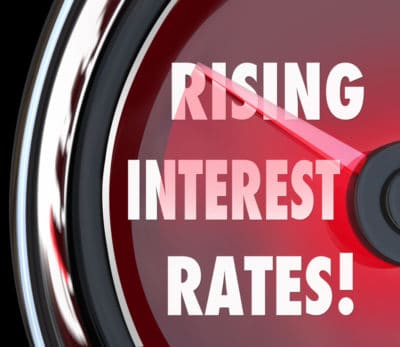
The Bank of Canada Raises Rates Again and Speculation Grows That It May Not Be Done Yet
The Bank of Canada surprised markets when it raised its policy rate by 0.25%. Another rate rise had been expected before the end of the year, but the consensus believed that the Bank would wait until its October meeting.
To briefly recap, the Bank of Canada cut its policy rate twice in 2015 (by 0.25% each time) in response to the oil-price shock, and in early 2017 it assessed that our economy’s adjustment to lower oil prices was now close to completion. This served as a warning that those two emergency rate cuts would soon be clawed back and the only question left was the timing of when this would happen.
The reversal of the fist 0.25% happened in July when the Bank of Canada raised its overnight rate from 0.50% to 0.75%. Then, after seeing that our annualized GDP growth came in at a whopping 4.5% in the second quarter, the Bank felt emboldened to unwind its second oil-related emergency cut by raising its overnight rate from 0.75% to 1.00%.
Lender prime rates, which our variable-rate mortgages are priced on, move in lock step with Bank of Canada’s overnight-rate increases, so variable-rate borrowers have just experienced their second 0.25% rate bump since July, after more than seven years with no increases.
Market watchers also keyed in on the Bank of Canada’s observation that “today’s removal of some of the considerable monetary policy stimulus in place is warranted” in its accompanying statement. The carefully placed word “some” has been interpreted as a signal that the Bank may raise again before the year is out.
From a practical standpoint, the latest rate hike will have only a minor impact on variable-rate borrowing costs. For example, a 0.25% rate increase adds about $12/month in interest costs for every $100,000 borrowed. Even with the last two rate increases included, our current average mortgage rate still sit at 3.25%, which is a little below our average mortgage rate of 3.3% over the past five years (hat tip to economist David Rosenberg for that statistic), and our average debt-service ratio remains below its long-term historical average.
Concerns about the affordability of this increase have also been mitigated by the mortgage rule changes which require variable-rate borrowers to qualify using a stress test that proves that they can afford for their rate to more than double. That onerous qualifying standard ensures that today’s variable-rate borrowers are better positioned to withstand rate increases than ever before.
There is also concern that the latest rate increases may have a negative impact on our housing markets, but those shouldn’t materialize if the Bank of Canada is, in fact, reading our economy right.
The Bank is raising rates because it believes that our economy now has achieved sustainable momentum. If that assessment is correct, average income growth will accelerate and that will expand affordability for purchasers.
If our current run of “stronger than expected growth”, which the Bank calls “broadly-based and self-sustaining”, continues to be underpinned by “solid employment and income growth”, we could see another rate increase before the end of the year.
In addition, all else being equal, the Bank would probably prefer to continue raising rates because it will help reduce the systemic risks that have built up during our extended period of ultra-low interest rates, while also giving it more room to lower rates the next time our economy falls into recession. But if the Bank holds true to its claim that its policy-rate path is “not pre-determined and will be guided by incoming economic data”, there are at least three significant obstacles that stand in the way of additional policy-rate increases in the near future: The surging Loonie, Low inflation, and Lackluster wage growth.
While the Bank of Canada’s last two rate rises were relatively easy to foresee, its next move will be harder to predict. We have seen some encouraging improvement in the economic data of late but with the Loonie continuing to surge, inflationary pressures still largely dormant and average incomes rising at a confounding slow rate, it is unlikely that the Bank of Canada will raise its policy rate again until we see material and sustained changes in more of our economic data.
At Client First Mortgage Solutions, we are always looking to save our clients money. We will analyze your mortgage to see if there is any way to save you money by re-writing / early renewing / or blending your existing mortgage. And with rates rising we can determine if it makes sense for you to lock in to a fixed-rate mortgage. We always look out for the clients best interest. Book a free mortgage analysis today.
Original Article – Dave Larock – September 11, 2017


